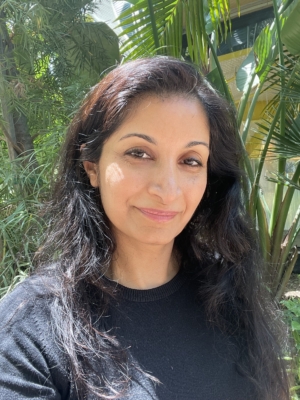Creative Nonfiction: From Category Label Dumpster to Instruction Manual for Art
Growing up in the 80s and 90s, the term “creative nonfiction” hadn’t yet assembled itself into a term, or at least I hadn’t come across it. In middle school, we studied autobiographies and essays by Anne Frank, Ralph Waldo Emerson and Ben Franklin. To my young self, these writers came with a stamp of authority because they could say, “I actually lived this.” My freshman writing seminar in college was called “Writing from Experience” (italics mine). As opposed to what, I wonder now. Writing from imagination? I didn’t question the framing then, but I also didn’t write anything memorable. Do I blame the title of the course? Or the fog of racing from class to class, staying up late with my first real boyfriend, my thoughts changing and scattering, getting lost or stuck in clumps like the leaves in upstate New York that fall; the pace of my life was too fast for me to capture it, let alone reflect on it.
As an adult in the making, I marinated in memoirs and essays with a feminist or social conscience: Virginia Woolf’s A Room of One’s Own, Kay Jamison’s An Unquiet Mind about her journey with bipolar depression, and Susan Sontag’s Illness as Metaphor. I’d put Joan Didion’s work into this category of women who spoke their personal truths with gravitas and flair. But there was still no such term as creative nonfiction, and I certainly wasn’t writing any.
What I was doing at the time was keeping a diary, something I’d done consistently since I was eleven. I loved the comfort of settling into the quiet space between me and whatever sized page came with the journal I was using at the time. It was a comfort to not have to filter anything, and to let whatever came out of a somewhat unconscious and mystical process be the resulting work. Who knew that academics had words like subjectivity and interiority for this? I was just cozy. Whether in a packed café in a college town, sitting at a table by myself, sick in bed in my dorm room surrounded by a pile of tissues, or in a plane, train or bus, or on a laptop in medical school between studying for anatomy exams, I kept close to the process.
When I leaf through these notebooks now, at times the handwritten shape of the letters is almost coming undone, as if in solidarity with me. Other times the script has the cut of something more self-conscious and put together, like, I know what I’m doing here is not just keeping a diary. Maybe someday it will be read.
I wasn’t wrong. Fast forward a couple of decades, and the first piece I published was a series of diary entries in response to the political unfolding around the 2016 election. Journaling felt different. It was more than a space to vent. I felt drawn to record those days, whether the entries would be read or not, as a way to resist erasure, as resistance.
I enjoyed the diaristic style of talking about my life, recording my observations, and I was beginning to argue that it ought to be its own literary form, but around that same time, I was beginning to experience bewildering and disruptive episodes that I couldn’t make sense of in the span of a day: bursting into tears after a massage, having a very public meltdown with my stepmother at a family wedding. I was starting a journey to confront early childhood loss, maternal separation, submerged memories that were making their way to the surface in mostly unwelcome ways.
It was like the universe had decided, now that you’re in your fourth decade of life you can maybe begin to understand what happened in the first three. I came to the page in a new way. I needed to actively mine the past to understand my present. I had to look underground, at the forgotten, the buried, the blind spots, the dark ocean. I took a workshop with a title that was new to me, creative nonfiction. The phrase struck me as bulky and banal, but it was with this awesome sounding teacher, an Antioch alum, Seth Fischer, so I signed up. One of Seth’s first assignments was to write a letter to someone about a secret. Something you’ve never shared with that person before, but also something you would never send. As if reality couldn’t actually bear it. But the page could. For the first time, sitting at the corner desk in my bedroom, the physical act of writing made me shake. Truth wasn’t so cozy anymore.
But I stayed at it. I applied for an MFA under this new category of “Creative Nonfiction” and started to identify as a writer who wrote in a specific genre, a specific discipline. The label itself still left me pulseless, but at least I had a writerly lane. It wasn’t until my shorter works in “CNF” (it was cool to use the abbreviation, especially with fellow writers) started to coalesce and suggest the possibility of a memoir, that I finally saw the term in a new light: not as the sum of its parts, but in each of its grim parts. Creative. Non. Fiction. As I parsed each word, it hit me that this whole CNF thing is sort of an evil backwards trick, a terrible process hidden in a glib abbreviation. Fiction is one word. We, writers of CNF, get two extra words. If I hadn’t been in the phase of revising my memoir, I would not have dug deeper. But my memoir had just entered its 8th year of development, and I’d experienced my fair share of re-traumatization from writing about really hard stuff, long spells of avoidance and bursts of productivity. I found myself examining the process of truth-telling and what it means to revise words that bear the responsibility of retelling.
My memoir project had generated some reasonably well edited 200+ pages. But there were still miles to go before I could sleep. Maybe to explain the eternity of this process to myself or as an excuse for my struggle, I decided that creative nonfiction isn’t just one thing. There are stages and you can’t skip them.
First, you live your life. That’s hard enough. To live. To be here and stay human day in and day out.
Second, you have to look at your life, see it, like from a perspective a bit outside of yourself. As if you were a character. You must remember and string together details because you are going to have to relay them later. Now you are not just a living-being, you are a narrator-being, a persona, according to Vivian Gornick. Gornick describes reading her diaries and feeling like the self in them was getting lost. With great relief she compares this to the narrative persona in her memoirs and realizes that now there is “no myself to lose.” Instead, she had someone on the page who was “strong enough to do battle for me.”
But how does this work in real time? For me, it meant seeing myself in the story of my life even as it’s unfolding, which takes a kind of jujitsu of presence. I’m experiencing this unspeakably tender moment with my child, but a part of me is adding this as a scene both to my memory and to my memory-telling.
Third, you realize yours is the only discipline in the world of culture and academia that has to embrace the prefix “non-.” I am not writing something; I am writing something that’s not something else. See this word over here that you know and feel comfortable with? Say fiction. I’m not that; I am an umbrella term for other umbrella terms.
Taking on the ‘non-’ means, now that I see myself as a narrator, not just a life-liver, I have to make sure that what I’m saying is indeed as close as humanly possible to what actually happened, albeit from my perspective. In the vernacular, “nonfiction” takes most people down the road of books on outer space or cooking or car mechanics. But a similar process applies to us writers of CNF. We have to get the facts down. Facts that might require research, interviews, psychologically kind to oneself but weird rituals to invoke memory, memories that might not always be easy to resurrect. We learn that this process of actively mining memory requires being vulnerable and that feeling safe enough to continue might even involve managing your external environment when writing, as Chris Arnold, a mentor once told me. My safe space became my bed with specific pillows to sit upright, a comforter, blanket and a laptop. And a closed door, locked if I was going really deep.
Fourth. Oh this is the worst part. You have to be “creative.” This is not a word tied to any other artistic discipline. No one tells fiction writers, or musicians or painters or sculptors, by the way, you need to append the word “creative” to how you describe your work or people will think it’s a romp through Home Depot, not art. The nerve.
But over time, the word “creative” is the part I’ve come to respect the most. In writing my first memoir, I’ve realized that being creative about nonfiction is a deliberate act. It has meant certain pleasurable considerations like – ohhhh! I notice I write about the moon a lot. I don’t mean to, but there it is, multiple times in the manuscript. Maybe the moon is a metaphor, no better yet, a motif! Now I can revise with a thematically resonant structure. Or, I notice I write about music, about songs that have mattered to me, maybe that’s an anchor for this. And so much of this is an after-the-fact insight. That first word in the descriptive term of my genre has often come last in terms of my process.
Creative nonfiction is about what to include and what to exclude. The act of selection – of a period of time in one’s life, or of a key event, of where to begin and where to end because after all, life is continuous, so the story is continuous and meaning builds over time – is a critical part of the art. Days (until we invent time travel) proceed sequentially but lived experience does not, and when it’s translated into words, it alchemizes with the written to deepen metaphors and meaning over time. Who among us CNF writers thought their piece was done when another life event happened and you had to ask, is this part of the story or is it a new story? One specific part of your life has ended, and another might have begun but who knows, this new moment might be the exact thing that the older story needs to have the most significance! As hard as this sounds, it is banal to those of us who traffic in the terror of the discipline: divorces, deaths, major health events; to cut or to keep? Hmm. Ok, Ctrl X. Next paragraph.
And even once the curation of life experience and its creative telling is decided upon, there are still all the common elements of literary excellence. We are held to those things too – oh, the craft of writing.
These stages of unpacking and personally relating to each word in the phrase creative nonfiction took me years. No one tells you about these stages before you start out as a writer in CNF, and while they sometimes overlap, I think they mostly deserve separate consideration. You live your life as mindfully and authentically as you can. You lift out of that experience as a narrator, which adds in an automatic element of fiction. Then with ‘non,’ you work hard to make sure your subjective truth is somewhat substantiated because… there will be readers. And while creativity might burst forth at the very start of a project, the work of stylistic presentation or craft stays with you throughout, and for me was only something I could really focus on after I’d trekked through the other stages.
Creative nonfiction is a ridiculous, even mocking term on the one hand, but taken word by word, it’s also a recipe, a wise and kind guide, something to keep you patient through long stretches of emotional resistance, something to quell the panic of transforming pain, or even the anxiety of bliss, onto the page. There is no way to get it all in one pass. I suspect those of us nons, who apparently need to be told to be creative, in fact benefit from this rubric. Because the work is hard and as real as it gets.
Indu Subaiya is a writer and entrepreneur based in Los Angeles by way of Bangalore, India. Her essays have appeared in The Rumpus, Stone Canoe, Animal Literary Magazine, Writing the Resistance, and Immigrant Report. She is an alumnus of the Voices of our Nations Arts Foundation (VONA) writing workshop and received her MFA in creative nonfiction from Antioch University.





